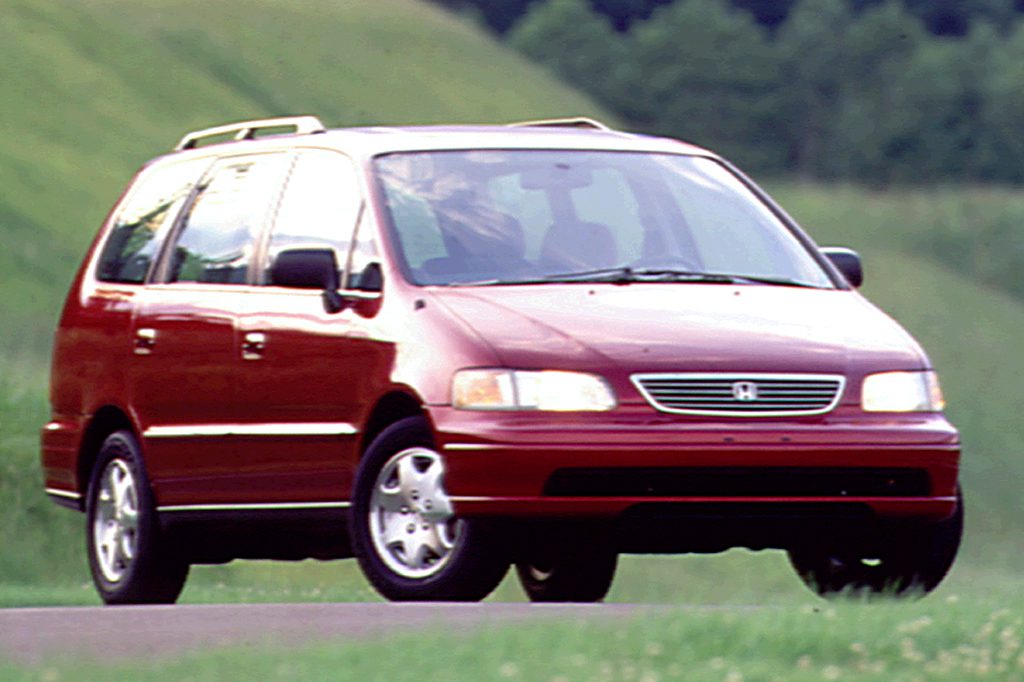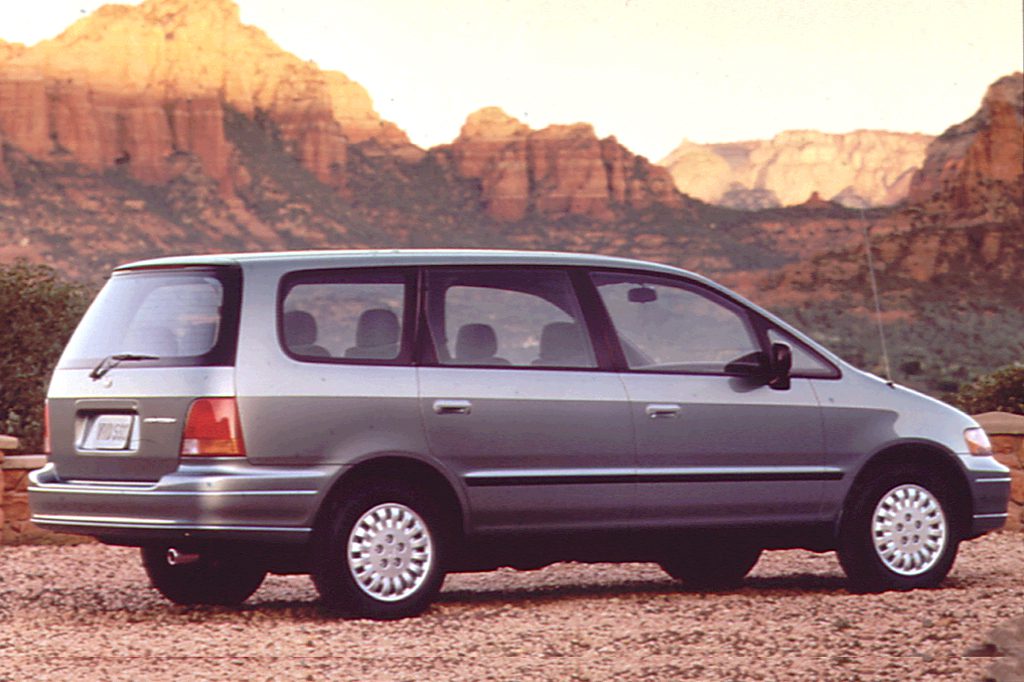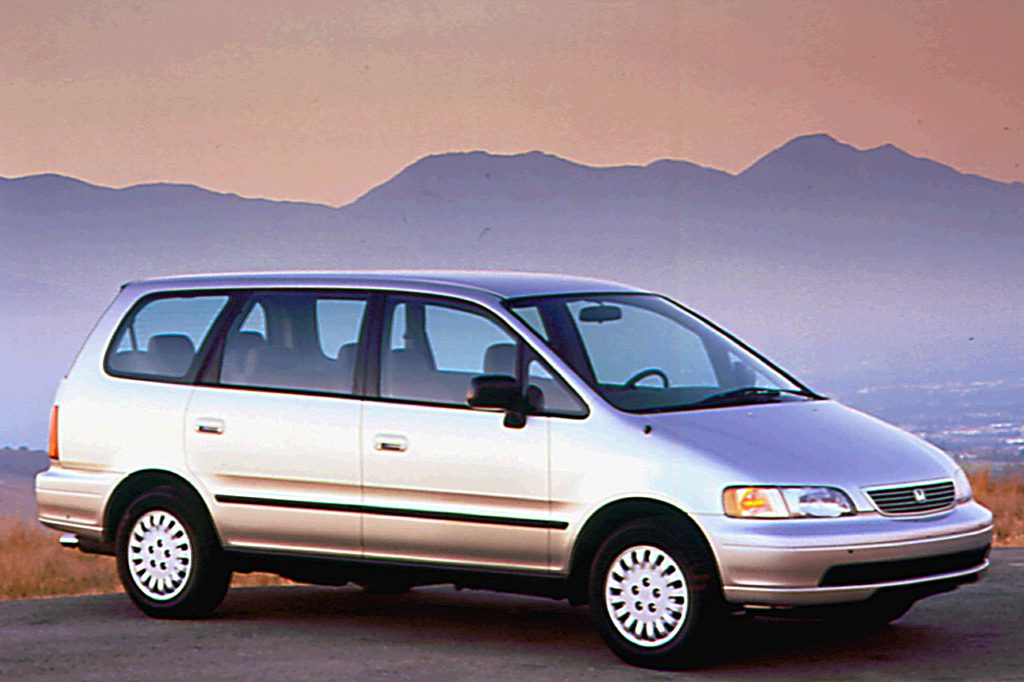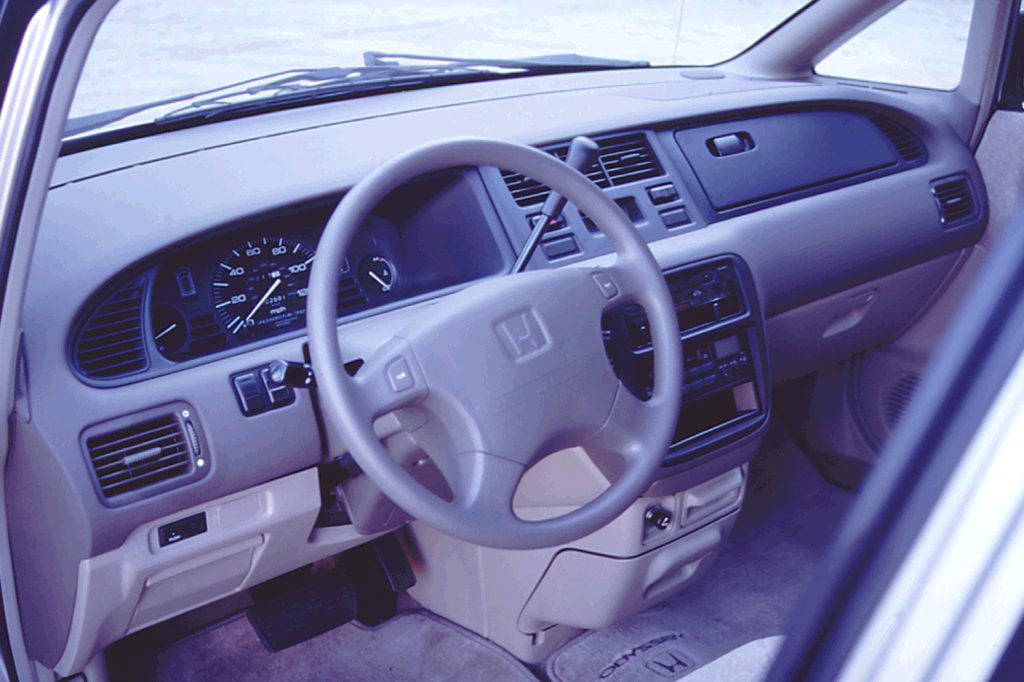| Minivan; Built in Japan |
|
|
| Good condition price range: $1,500 – $3,100* |

1995 Honda Odyssey

1996 Honda Odyssey LX

1997 Honda Odyssey

1995 Honda Odyssey interior

1995 Honda Odyssey interior
| Pros: |
|
| Cons: |
|
Well-built, well-equipped, and likely to be reliable, Odyssey is worth a look–provided that it’s big enough to meet your needs. Lack of a V6 and modest dimensions tend to limit its appeal, however, against the league-leading Chrysler minivans and Ford’s Windstar.
Overview
Honda became the last major automaker to issue a minivan, adding the Accord-based Odyssey after the 1995 model year began. About as long as a Mercury Villager or Nissan Quest, the most unique feature was its four sedan-style swing-open side doors–no sliding side door at all. Sole powertrain was a 140-horsepower, 2.2-liter 4-cylinder engine and 4-speed overdrive automatic transmission. Offered in LX and upscale EX trim, Odysseys came with standard dual airbags and antilock disc brakes. Seating for seven was standard on the LX: two front buckets, a 3-place middle bench, and 2-place rear bench. The 2-place rear bench folds flush with the floor.
Yearly Updates
| 1996 Odyssey Isuzu began to market a similar Oasis minivan in January 1996, differing from the Odyssey mainly in its grille treatment. |
| 1997 Odyssey Variable-speed intermittent windshield wipers, body-colored mirrors, and redesigned alloy wheels were among the minor equipment alterations for the upscale EX Odyssey. |
| 1998 Odyssey Honda replaced the 2.2-liter engine with a larger 2.3-liter unit. Horsepower is up by ten, and automatic transmission remains standard. Other changes include a restyled grille and revised instrument panel with tachometer. Odyssey was completely redesigned for ’99 with a V6 engine and dual sliding doors. |
